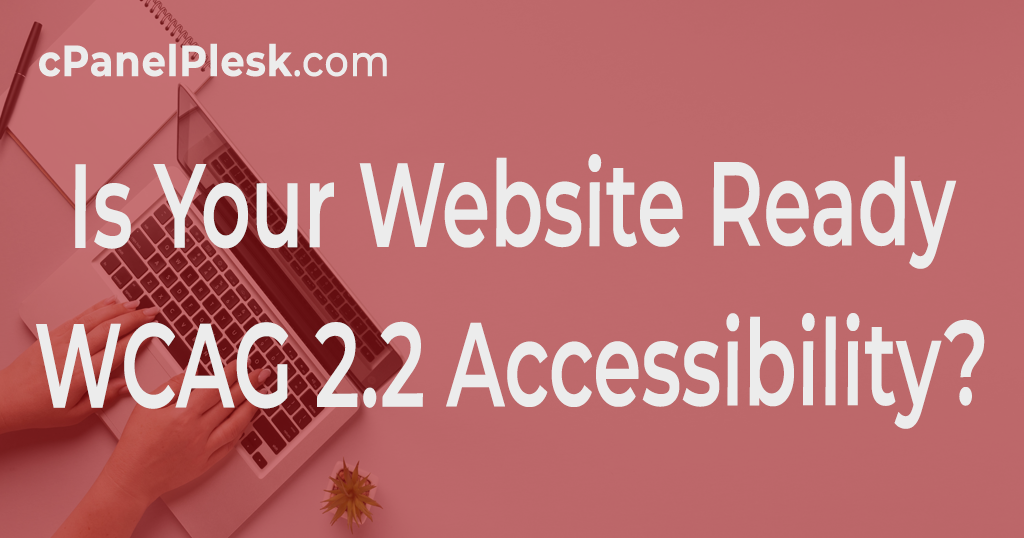This year, website accessibility is getting a facelift, so get ready to improve yours. According to the CDC, accessibility is a major concern for people with disabilities, who account for 26% of adults. It’s also a major concern for site owners, because if your site is difficult or impossible to use, visitors will go elsewhere.
Compliance with the Americans with Disabilities Act (ADA) is a legal obligation for organizations with 15 or more employees, as well as those that provide public accommodations to customers, such as a physical conference room or store.
With the free materials and tools accessible now, even the smallest business and least tech-savvy site owners can boost accessibility.
Start by learning what every website owner needs to know about ADA compliance if you’re not already up to speed on what’s necessary and suggested. The World Wide Web Consortium (W3) Web Accessibility Initiative also has complete web accessibility materials, including accessibility foundations.
Suppose your site complies with the W3’s existing Web Content Accessibility Guidelines (WCAG 2.1). In that case, all you have to do now is prepare to adopt the new success criteria that WCAG 2.2 will introduce this summer.
What’s new in the latest set of accessibility guidelines?
The WCAG 2.2 rules are being developed by the World Wide Web Consortium (W3C) to improve the user experience for people with limited vision, cognitive or learning difficulties, and/or disabilities on mobile devices.
There are nine new success criteria in the works as of this writing. Here’s what they are and what they could mean for your website, however bear in mind that they’re still in the works.
- Accessible authentication: Is it necessary for site visitors to do a cognitive task in order to log in, such as typing in characters or completing a puzzle? If that’s the case, there should be another means to log in, such as using a password manager’s autofill feature or copy-paste. Instead of doing math problems or entering text, CAPTCHAs should focus on recognising familiar items.
- Dragging:Is it necessary for people to drag with their fingers or a mouse on your site? It should also be possible to navigate the web with just a pointer, to accommodate people who don’t have access to their hands.
- Findable help: Place your support choices (phone, email, chat, knowledge base, etc.) in the same format on every page.
- Fixed reference points: If you have digitized versions of print books or articles with page breaks on your site, the page numbers should match the print edition.
- Minimum focus appearance:You might not be familiar with the term “keyboard focus indication,” but if you did, you’d recognise it.
WebAIM
The focus indicator is focusing on when tabbing or mousing to a page element, such as a form field or a hyperlink, alters its look. The keyboard-controlled focus indication may need to meet specified size, contrast, and visibility requirements in WCAG 2.2.
- Enhanced focus appearance: This improves on the previous minimum focus appearance criterion with higher contrast and larger minimum size.
- Remote controls: Any controls your visitors need to navigate your site or complete a job should be displayed when needed, without requiring them to hover or use their keyboard focus.
- Pointer target spacing: A target on your site is a location where users may act with a pointer, such as a product photo that they can point at to magnify it. Each target area should be at least 44 CSS pixels high and wide, with no additional targets within its boundaries. For instance, having a pop-up that overlaps another target causes usability issues.
- Redundant entry: When users complete a process on your sites, such as registration or checkout, don’t make them enter the same information twice. Previously entered data should either auto-populate or be selectable. It is also a best practice for reducing cart abandonment on eCommerce sites.
Now that we know what we need to accomplish, we’ve compiled a list of WordPress and available tools to assist you in creating a better experience for disabled users.
Next steps and resources for WordPress accessibility
The best practices manual from the WordPress Accessibility Team covers the basics. It explains how to make your site’s markup, design, and content more accessible in plain English for non-technical individuals. If you wish to learn more, it also contains examples and recommendations for more reading.
Accessible WordPress themes
Using a WordPress theme that is accessible can help you ensure that your site follows best practices for navigation, contrast, and other issues.
- Accessible WordPress Theme for Podcasts
- Retailer Accessible WordPress Theme
Currently, WordPress.org has over 100 themes that fit these criteria, including themes for blogs, visual portfolios, podcasts, and ecommerce.
Plugins that check and improve the accessibility of your WordPress site
Don’t want to or can’t swap themes right now? The WP Accessibility plugin, which is available for free, can assist you in resolving some of the most prevalent theme accessibility concerns by:
- Adding capacity for long descriptions to images
- Labeling WordPress form fields
- Including post titles on “read more” links
- Testing color contrasts
The publisher states up front that this plugin will not solve all accessibility issues, but it will assist you in starting to make improvements and identifying issues that need to be addressed.
You might want to look into the following two plugins:
- Each new post and site modification is immediately scanned by Accessibility Checker, which compares your content to more than 40 Web Content Accessibility Guidelines and tells you what to fix and how to repair it. The premium version supports WooCommerce and provides bulk scanning of all your site’s posts or pages.
- WP ADA Compliance Check Basic works in a similar way to Accessibility Checker in terms of content scanning. The commercial version analyses your entire site, including “theme files, widgets, shortcodes, custom fields,” and other things.

